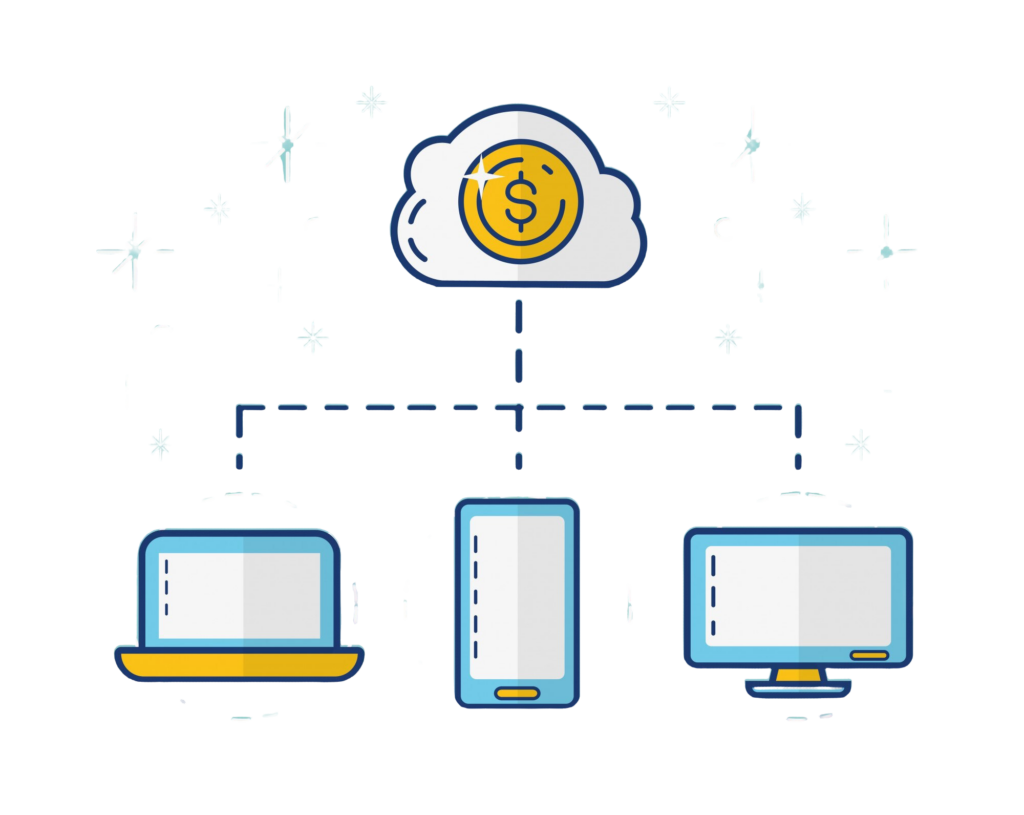Managing cloud expenses is a critical concern for app developers and businesses leveraging cloud services. Without proper oversight, costs can escalate rapidly, impacting budgets and overall profitability. Implementing effective strategies to monitor and optimize cloud spending is essential for maintaining financial health while harnessing the full potential of cloud computing.
Understanding Cloud Cost Components

To effectively manage cloud expenses, it’s crucial to comprehend the primary cost components:
Data Storage: Costs are determined by the volume of data stored, the duration of storage, and the selected storage tier. Frequently accessed data typically incurs higher costs compared to archival storage options.
Computing Power: Expenses are influenced by the number and specifications of virtual machines (VMs) or cloud instances, including CPU and RAM, as well as their operational time. Aligning VM resources with actual usage—known as rightsizing—can lead to significant cost savings.
Data Transfer: Charges apply for data moving into and out of the cloud environment. While inbound data transfers are often free or low-cost, outbound transfers can be substantially more expensive, especially when data moves between different regions or services.
Strategies for Reducing Cloud Costs
Implementing the following strategies can help optimize cloud spending:
Rightsizing Resources: Analyze and adjust your cloud resources to match actual workload requirements. This involves scaling down over-provisioned resources and ensuring that each service operates at optimal capacity without excess.
Utilizing Reserved Instances: For predictable workloads, consider purchasing reserved instances, which offer significant discounts compared to on-demand pricing. This approach requires a commitment to a specific usage period but can lead to substantial savings.
Leveraging Spot Instances: For flexible, non-critical tasks, spot instances provide access to unused cloud capacity at reduced rates. While these instances can be terminated by the provider with short notice, they are cost-effective for suitable workloads.
Implementing Auto-Scaling: Configure auto-scaling to adjust resources dynamically based on real-time demand. This ensures that you pay only for the resources you need at any given time, preventing over-provisioning during low-usage periods.
Monitoring and Managing Unused Resources: Regularly audit your cloud environment to identify and eliminate unused or underutilized resources, such as idle VMs or unattached storage volumes, which can contribute to unnecessary costs.
Optimizing Storage Solutions: Select appropriate storage classes based on data access patterns. For instance, use standard storage for frequently accessed data and archival storage for infrequently accessed data to reduce expenses.
Employing Cost Management Tools: Utilize cloud cost management tools to gain visibility into your spending, set budgets, and receive alerts for unusual spending patterns. These tools assist in making informed decisions and maintaining control over cloud expenditures.
Implementing Data Transfer Optimization: Minimize data transfer costs by strategically planning data movement, consolidating data storage within the same region, and optimizing application architecture to reduce unnecessary data egress.
Establishing Governance Policies: Develop and enforce policies for resource provisioning, usage, and decommissioning to prevent resource sprawl and ensure accountability. This includes setting up approval processes for resource allocation and implementing tagging strategies for cost tracking.
Training and Awareness: Educate your development and operations teams about cost implications associated with cloud resources. Encouraging a culture of cost-consciousness can lead to more efficient resource utilization and proactive cost management.
Conclusion
Effectively managing cloud costs requires a comprehensive understanding of your cloud environment and the implementation of strategic optimization practices. By adopting these strategies, app developers and businesses can achieve significant cost savings while maintaining the performance and scalability benefits of cloud services.
Regular monitoring, continuous optimization, and fostering a culture of cost awareness are key to sustaining efficient cloud operations and maximizing the return on your cloud investments.

